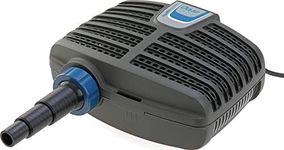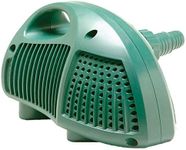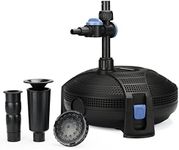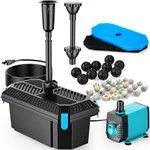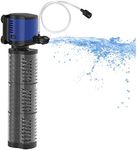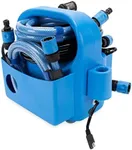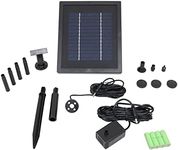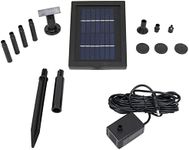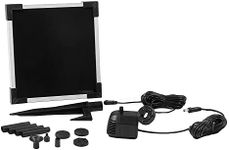Buying Guide for the Best Pond Filter Pumps
Choosing the right pond filter pump is essential for maintaining a clean and healthy pond environment. A good filter pump will help keep the water clear, reduce algae growth, and provide a healthy habitat for fish and plants. When selecting a pond filter pump, it's important to consider several key specifications to ensure you get the best fit for your pond's needs.Flow RateFlow rate refers to the amount of water the pump can move in a given period, usually measured in gallons per hour (GPH) or liters per hour (LPH). This spec is important because it determines how effectively the pump can circulate and filter the water in your pond. For small ponds, a lower flow rate (up to 500 GPH) may be sufficient, while larger ponds may require a higher flow rate (1000 GPH or more). To pick the right flow rate, consider the size of your pond and the type of filtration system you have. A general rule of thumb is that the pump should be able to circulate the entire volume of the pond water at least once every two hours.
Head HeightHead height, or maximum lift, is the maximum height the pump can push water upwards. This spec is crucial if you have a waterfall, fountain, or any other feature that requires water to be lifted to a certain height. Pumps with higher head heights are needed for taller features. To choose the right head height, measure the vertical distance from the pump to the highest point of your water feature and select a pump that can handle that height.
Power ConsumptionPower consumption indicates how much electricity the pump uses, usually measured in watts. This spec is important for understanding the operating cost of the pump. Lower power consumption is more energy-efficient and cost-effective in the long run. When selecting a pump, consider the balance between flow rate and power consumption. More powerful pumps may consume more energy, so choose one that meets your pond's needs without excessive power usage.
Pump TypeThere are different types of pond filter pumps, including submersible and external pumps. Submersible pumps are placed directly in the pond and are generally easier to install and maintain. External pumps are located outside the pond and are typically more powerful and durable. The choice between submersible and external pumps depends on your pond setup and personal preference. Submersible pumps are ideal for smaller ponds and simpler installations, while external pumps are better suited for larger ponds and more complex systems.
Filter CompatibilityFilter compatibility refers to how well the pump works with your pond's filtration system. This spec is important because the pump needs to be able to handle the type and size of filter you have. Some pumps come with built-in filters, while others require separate filter units. To choose the right pump, ensure it is compatible with your existing filter system or select a pump and filter combination that works well together. Consider the type of debris and the amount of waste your pond generates when making your decision.
Durability and MaintenanceDurability and maintenance refer to the pump's lifespan and how easy it is to maintain. This spec is important because a durable pump will last longer and require less frequent replacement. Look for pumps made from high-quality materials and with good warranties. Additionally, consider how easy it is to clean and maintain the pump. Pumps with removable parts and easy access for cleaning are more convenient and can help ensure the pump operates efficiently over time.
